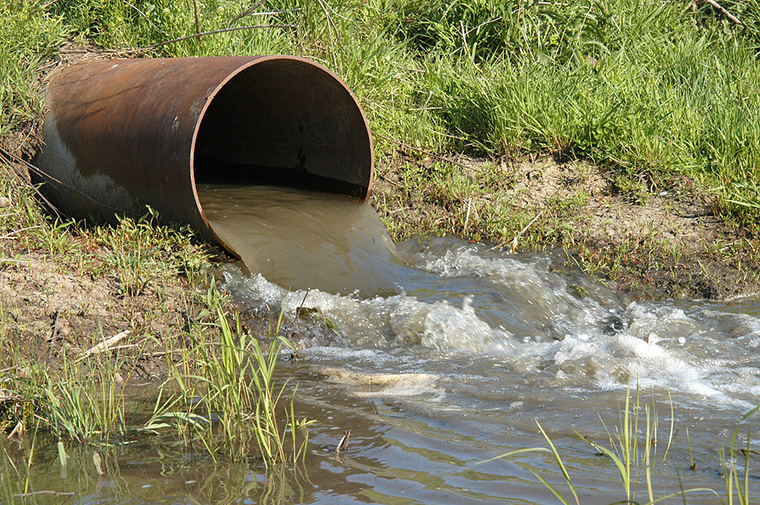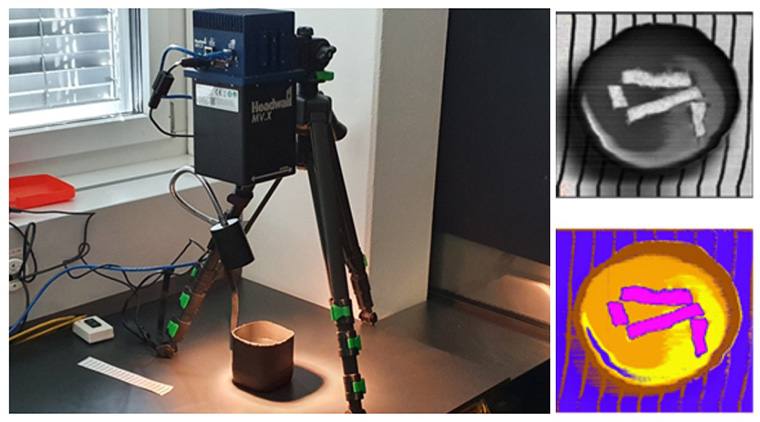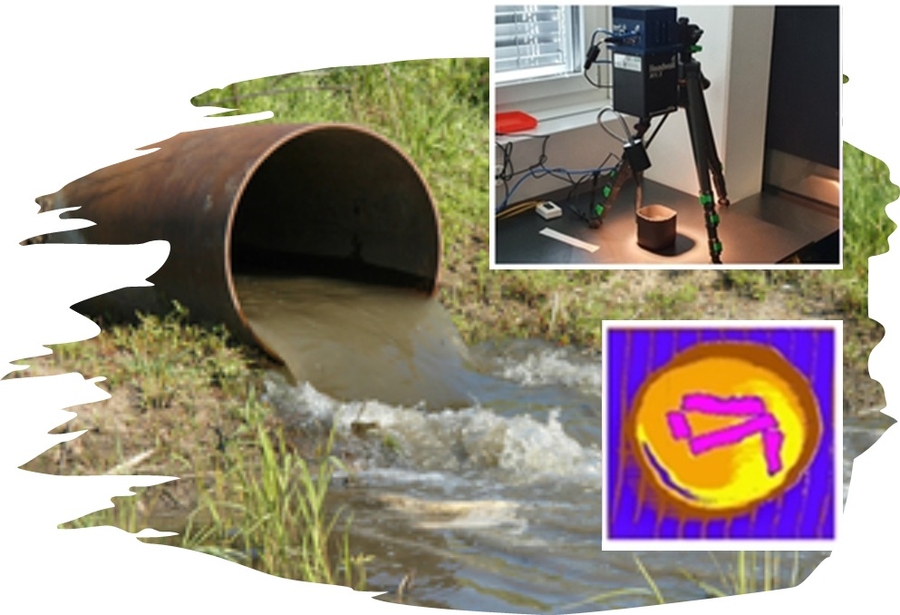We need to monitor pollution in the sewer system
Urban drainage systems (UDS), or sewers, are the networks of pipes and channels that carry wastewater and rainwater away from urban areas. They are important for city hygiene and environment protection, as they transport pollutants such as heavy metals, microplastics and fecal bacteria to treatment facilities. In many countries, a lack of investment and maintenance has left UDS in poor condition. Experts estimate that the European Union has to spend trillions of euros maintaining and repairing its wastewater networks, yet the EU is currently investing hardly enough to keep drainage systems functional [1]. UDS are not only in bad state, but they are also coming under more and more stress from growing urbanization and climate change. Defective or insufficient infrastructures raise the possibility of overloading, which usually occurs due to an intense rainfall, and results in the release of untreated wastewater into the environment (Figure 1). Even worse, urban flooding disasters are more likely to occur with an ineffective drainage system, which can have serious human and financial costs.

Figure 1: Discharge of untreated wastewater in the environment is a direct consequence of sewer overloading (image source)
To face these challenges, innovative approaches are required to better monitor and manage the sewer systems. In particular, being able to measure the pollution flow and dynamics is critical to identify the main pollutant pathways, conduct the highly polluted wastewater to a treatment location and discharge the low polluted water to the environment. Nevertheless, our ability to monitor sewer pollution remains very limited. The main reason is that conventional sensors used to monitor wastewater pollution are hard to operate in the UDS environment, where they are exposed to intense flow conditions, corrosive wastewater and clogging.
The potential and limits of optical techniques to monitor wastewater pollution
Optical sensors based on reflectance spectrophotometry are very promising to solve these challenges. Reflectance spectrophotometry is a technique used to measure the amount of light reflected by a material across different wavelengths. This method is commonly employed in various scientific fields such as chemistry, physics, biology, and materials science to analyze the optical properties of materials. It has the potential to make a remote measurement of wastewater pollution possible.
Avoiding contact with the wastewater makes this concept more sustainable than immersed sensors because of the reduction of maintenance costs. However, in the last decade, only a small number of research groups tried to use light reflectance to measure the pollution levels in wastewater [2]–[4]. As of now, this approach has only been tested in laboratories. Despite promising proof of concept, little generalizable knowledge is available, and reflectance spectrophotometry has never been applied to field measurement.
How to explain that this approach has not been studied more? For a long time, spectrophotometers were only devices capable of measuring reflectance spectra. They are highly precise instruments for this purpose. However, they are not suited for measurements in environments with fluctuating surface conditions. In the sewers, the surface of the wastewater is constantly changing due to factors such as water level fluctuations, wave formations, and the presence of floating objects like toilet paper or foam. Spectrometers may struggle to adapt to these perturbations since they cannot differentiate between objects causing disturbances and the surface of wastewater.
Hyperspectral imaging (HSI): A new generation of sensors that is a viable solution?
Hyperspectral imaging is a groundbreaking technology that captures images across a wide range of wavelengths, unlike regular cameras, which use just three (See Figure 3). HSI can be seen as hundreds of tiny spectrophotometers taking readings at every pixel in the image. This combination of spatial and spectral information makes this technology incredibly versatile, with applications ranging from environmental monitoring to medical diagnostics and agriculture. It is especially good at analyzing images and creating models. These models can be used to detect cancer cells, assess plant health, or even measure the nutritional value of food. [5] – [7]

Figure 3: Difference between hyperspectral and RGB camera (image source)
HSI presents a promising solution to overcome the limitations of spectrophotometers. While spectrophotometers are highly precise, HSI offers distinct advantages. Its ability to detect objects allows it to filter out disturbances like floating debris in sewer environments. Additionally, HSI's spatial awareness enables it to adapt to varying water levels and flow conditions more effectively. As a result, HSI is expected to outperform spectrophotometers in monitoring wastewater in sewer systems.
The aim of my PhD is to develop the use of HSI to monitor wastewater pollution on the scientific and practical level. I started with laboratories trials to isolate the impact of a specific parameter on the measurement. The left of figure 4 shows an experimental setup that I developed for my first tests, where I used a pixel detection algorithm based on hyperspectral data structures to detect the presence of perturbations on the surface of a sample. The right of figure 4 shoes the example of the detection of strips of paper in a wastewater sample. In a second series of laboratory tests, I demonstrated that hyperspectral cameras are able to measure accurately pollutants in wastewaters, such as the concentration of suspended solids, of organic carbons and of nitrogenous compounds. The results of this experiment are summarized in a scientific publication [8]. These first findings suggest that HSI holds great promise as a non-contact technology for assessing water quality in raw wastewater.

Figure 4: Left: first test with a hyperspectral camera at Eawag, Right: object detection on the hyperspectral image of a wastewater sample with pieces of paper floating.
Hyperspectral imaging is gaining popularity, because it combines the function of a camera and a spectrophotometer. It represents a serious candidate to be the future star of pollution monitoring in the sewer. My PhD aims at laying the scientific foundation to develop this new application. In the future, pollution monitoring in the drainage system will contribute to minimize our impact on the environment. It will also help wastewater treatment plants to be more efficient, by knowing ahead of time the pollution source and quantity coming their way.
Do not hesitate to write me an email if you have a question, idea or are willing to work with me!
References
[1] F. Tscheikner-Gratl et al., ‘Sewer asset management – state of the art and research needs’, null, vol. 16, no. 9, pp. 662–675, Oct. 2019, doi: 10.1080/1573062X.2020.1713382.
[2] J. Agustsson, O. Akermann, D. Barry, and L. Rossi, ‘Non-contact assessment of COD and turbidity concentrations in water using diffuse reflectance UV-Vis spectroscopy.’, Environmental science. Processes & impacts, vol. 16 8, pp. 1897–902, 2014, doi: 10.1039/c3em00707c.
[3] Z. Xing et al., ‘Quantitative estimation of wastewater quality parameters by hyperspectral band screening using GC, VIP and SPA’, PeerJ, vol. 7, p. e8255, Dec. 2019, doi: 10.7717/peerj.8255.
[4] S. L. Russell, D. R. Marshallsay, B. MacCraith, and M. Devisscher, ‘Non-contact measurement of wastewater polluting load - the Loadmon project’, Water Science and Technology, vol. 47, no. 2, pp. 79–86, Jan. 2003, doi: 10.2166/wst.2003.0090.
[5] G. Lu and B. Fei, ‘Medical hyperspectral imaging: a review’, JBO, vol. 19, no. 1, p. 010901, Jan. 2014, doi: 10.1117/1.JBO.19.1.010901.
[6] H. T. Temiz and B. Ulaş, ‘A Review of Recent Studies Employing Hyperspectral Imaging for the Determination of Food Adulteration’, Photochem, vol. 1, no. 2, Art. no. 2, Sep. 2021, doi: 10.3390/photochem1020008.
[7] Stuart, McGonigle, and Willmott, ‘Hyperspectral Imaging in Environmental Monitoring: A Review of Recent Developments and Technological Advances in Compact Field Deployable Systems’, Sensors, vol. 19, p. 3071, Jul. 2019, doi: 10.3390/s19143071.
[8] Lechevallier, P., Villez, K., Felsheim, C. and Rieckermann, J.: Towards non-contact pollution monitoring in sewers with hyperspectral imaging,
https://doi.org/10.1039/D3EW00541K, 22 February, 2024.














0 Comments
No comments found!